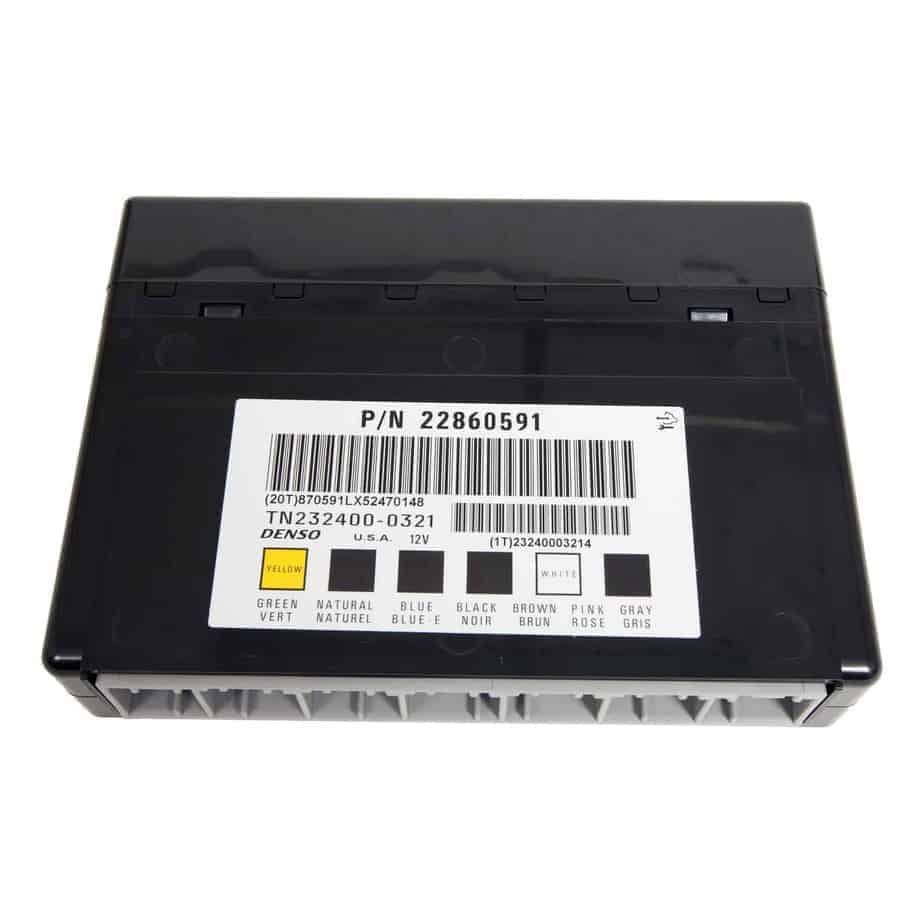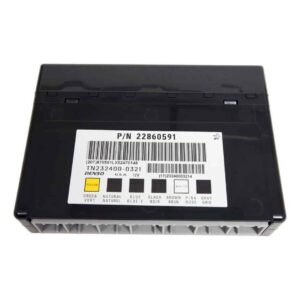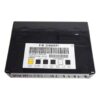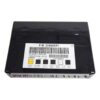Restore Full Functionality to Your Truck with a Plug-and-Play BCM
If you’re dealing with bizarre electrical problems in your 2010 Chevrolet Avalanche 1500—like flickering lights, a dead instrument cluster, power windows with a mind of their own, or a security light that won’t turn off—you’re not alone. These frustrating issues often trace back to a single component: a failing Body Control Module (BCM). As the central nervous system for your truck’s electronics, when the BCM goes bad, it can cause chaos. This isn’t just an annoyance; it can affect vehicle security and safety systems.
Forget the expensive trip to the dealership and the days of downtime. We offer a reliable, cost-effective solution. This BCM is meticulously tested and programmed with the latest GM software specifically for your truck’s Vehicle Identification Number (VIN). When it arrives, it’s ready to install, saving you hundreds in diagnostic and programming fees. This is the direct-fit fix you need to get your Avalanche back to 100%.
A Technician’s Notebook: The Avalanche That Wouldn’t Behave
I remember a 2010 Avalanche rolling into my bay with a laundry list of complaints. The owner was convinced it was haunted. The radio would switch stations, the dome light would stay on, and sometimes the power locks wouldn’t respond. He’d already replaced the battery and checked fuses. A scan showed a dozen communication error codes (U-codes) between various modules. This is a classic sign. Instead of chasing ghosts, we went straight for the BCM. A failing BCM can’t properly direct traffic on the vehicle’s data network, causing all sorts of unrelated systems to act up. Swapping in a VIN-programmed BCM solved every single issue in under an hour. It’s a textbook example of how one part can be the root of many problems.
Is Your Avalanche Showing These Signs?
A faulty BCM can manifest in numerous ways. If you’re experiencing any of the following, a failing BCM is the most likely cause:
- ✔ Intermittent or non-working power windows, door locks, or mirrors.
- ✔ Flickering interior or exterior lights, including headlights and dash lights.
- ✔ The security system light stays on, or the alarm goes off randomly.
- ✔ Instrument cluster gauges behaving erratically or not working at all.
- ✔ A/C and climate control functions are unresponsive.
- ✔ The radio or infotainment system is malfunctioning.
- ✔ The vehicle won’t start, and you see a “Service Theft Deterrent System” message.
- ✔ Diagnostic trouble codes (DTCs) related to communication errors, such as U0140, U0155, or U0100.
Your Straightforward Guide to Installing the 2010 Avalanche 1500 BCM
Installation is manageable for a confident DIYer. The BCM on the 2010 Avalanche is typically located under the driver’s side of the dashboard, near the steering column. Always consult a service manual for the exact location.
- Safety First: Disconnect the negative terminal from your vehicle’s battery and wait a few minutes for the system to fully discharge.
- Access the Module: Remove any lower dash panels or trim necessary to gain clear access to the old BCM.
- Disconnect and Remove: Carefully unplug the electrical connectors from the old BCM. They have locking tabs, so be gentle. Once disconnected, unbolt or unclip the module from its mounting bracket.
- Install the New BCM: Mount your new, pre-programmed BCM in the same location and securely reconnect all electrical connectors. Ensure they click into place.
- Final Steps: Reinstall any trim panels you removed and reconnect the negative battery terminal.
Important Post-Installation Steps
Because this module is pre-programmed, your truck should start and run. However, depending on your vehicle’s specific configuration, a couple of additional procedures may be required to sync all systems:
- Airbag System Sync: If the airbag light is on after installation, a professional scan tool is needed to perform the “Setup SDM Primary Key in BCM” procedure. This syncs the BCM with the airbag module.
- Brake Pedal Position Relearn: Some models may require a brake pedal position sensor relearn to ensure proper brake light and traction control operation.
Disclaimer: Vehicle systems vary. We always recommend consulting a factory service manual or a certified technician if you are unsure about any step.
Guaranteed Vehicle Compatibility
This Body Control Module is a direct replacement for part number 25934763 and is interchangeable with the following part numbers:
10382479, 15093910, 15276271, 15299986, 15819552, 15828601, 15837419, 15872388, 15872421, 15880684, 15921352, 15921353, 15948438, 15948439, 20815898, 20839063, 20864767, 20864768, 20921435, 20921436, 20935349, 22860591, 25826124, 25826125, 25847588, 25847589, 25892622, 25910474, 25934762, 95151084
It is designed to fit a wide range of GM vehicles, including:
AVALANCHE 1500 10 (ID 25892622)
CAPRICE 11-13
CAPTIVA SPORT 12
CTS 08-13
DTS 06-11
ENCLAVE 08-12
EQUINOX 07-09
ESCALADE 10
ESCALADE ESV 10
ESCALADE EXT 10
EXPRESS 1500 VAN 08-12
EXPRESS 2500 VAN 08-12
EXPRESS 3500 VAN 08-12
G8 08-09
HUMMER H2 08-09
IMPALA 06-13
LUCERNE 06-11
MONTE CARLO 06-07
OUTLOOK 07-10
SAVANA 1500 VAN 08-12
SAVANA 2500 VAN 08-12
SAVANA 3500 VAN 08-12
SRX 07-09
STS 10
SUBURBAN 1500 10
TAHOE 10
TORRENT 07-09
TRAVERSE 09-12
VUE 08-10
YUKON 10
YUKON XL 1500 10
Frequently Asked Questions
How does the VIN programming service work?
After you place your order, you’ll need to provide us with your vehicle’s 17-digit VIN. Our technicians use this information to load the correct GM factory software and vehicle-specific settings onto the BCM before we ship it. This ensures it communicates properly with your truck’s other modules right out of the box.
Do I need to send my old BCM to you?
No, this is not a repair service for your old part, nor do we require a core. We program a replacement module and ship it to you. We simply need your VIN, not your old part.
Will this fix my “Service Theft Deterrent System” message?
Yes, in most cases. A faulty BCM is a very common cause for this warning and a related no-start condition. Our VIN-programmed module has the correct security information loaded, which should resolve the issue once installed.
What tools do I need for the installation?
Basic hand tools are typically all that’s required for the physical installation, such as a socket set and trim removal tools. However, as noted, a professional-grade scan tool may be needed for post-installation procedures like the airbag system sync if the warning light appears.
What if I have an issue after installation?
Our team of experienced technicians is here to help. If you encounter any issues, contact us first. We can help diagnose whether it’s a simple relearn procedure or another issue, ensuring you get the support you need to complete the repair successfully.



